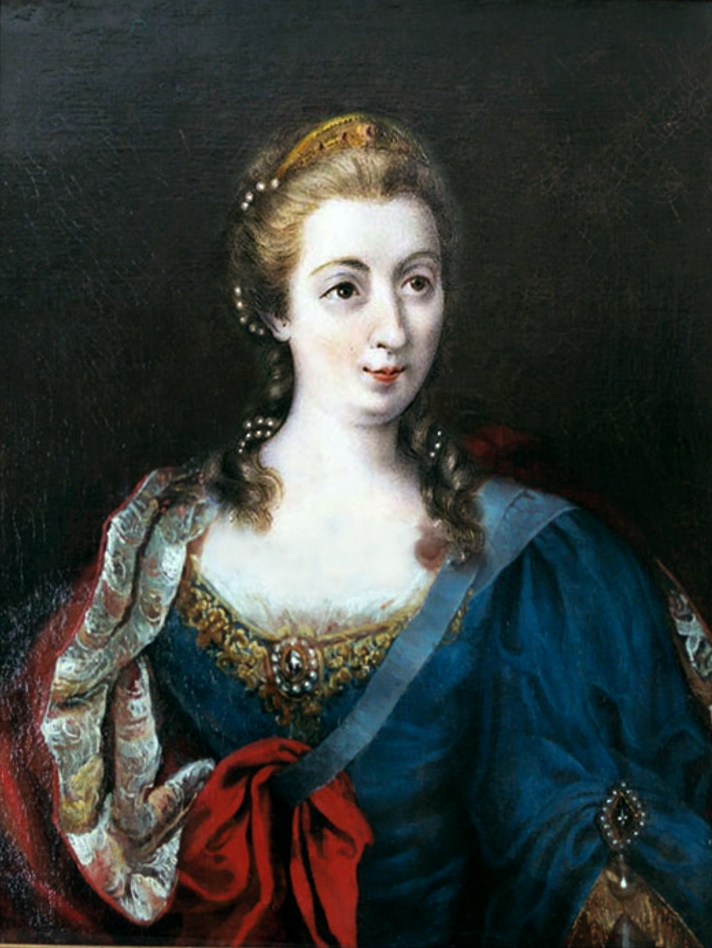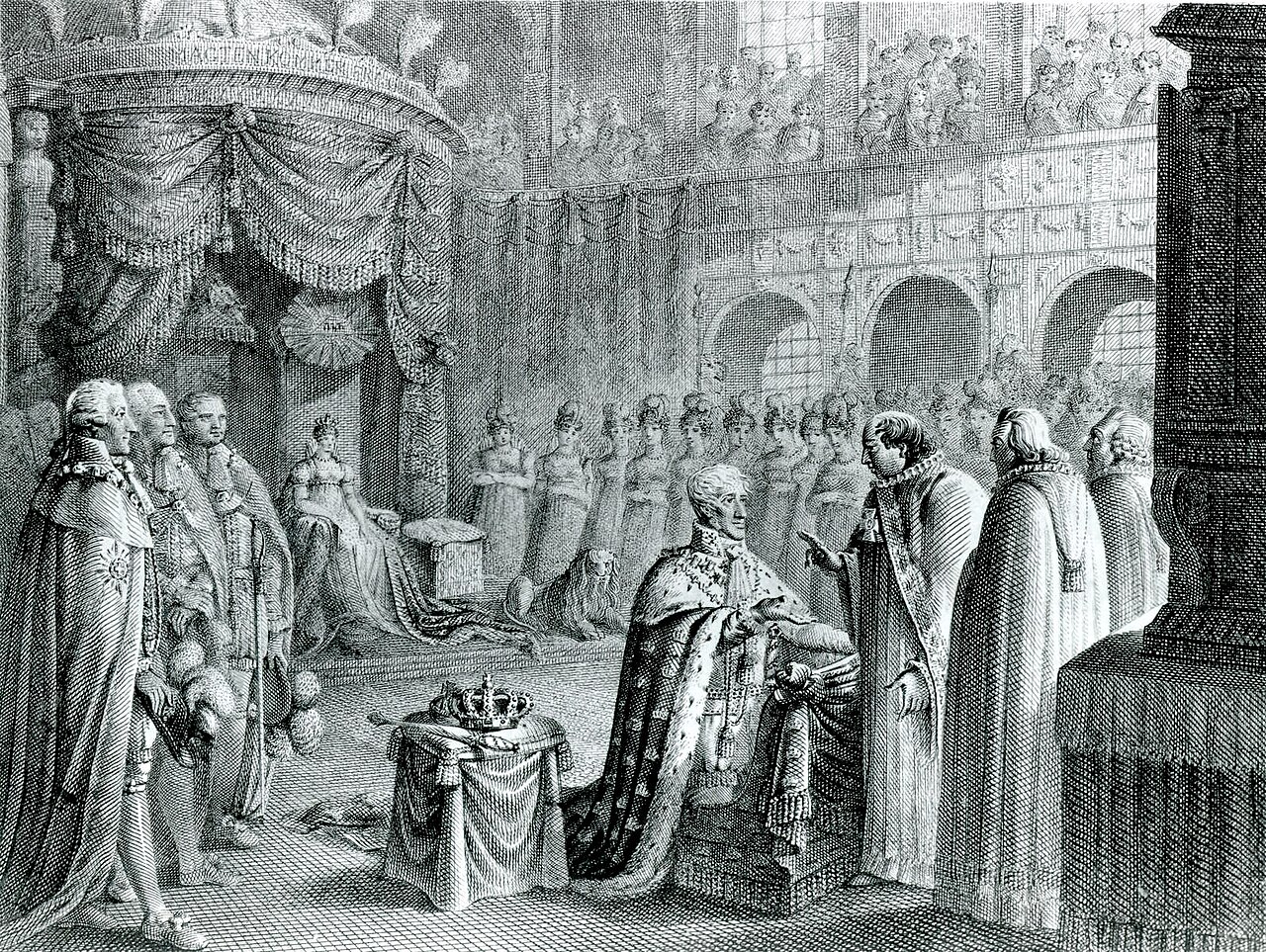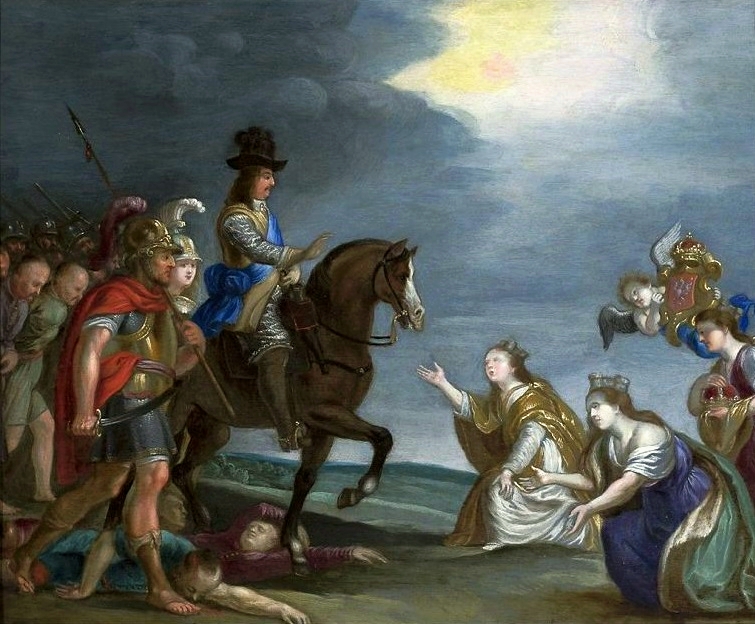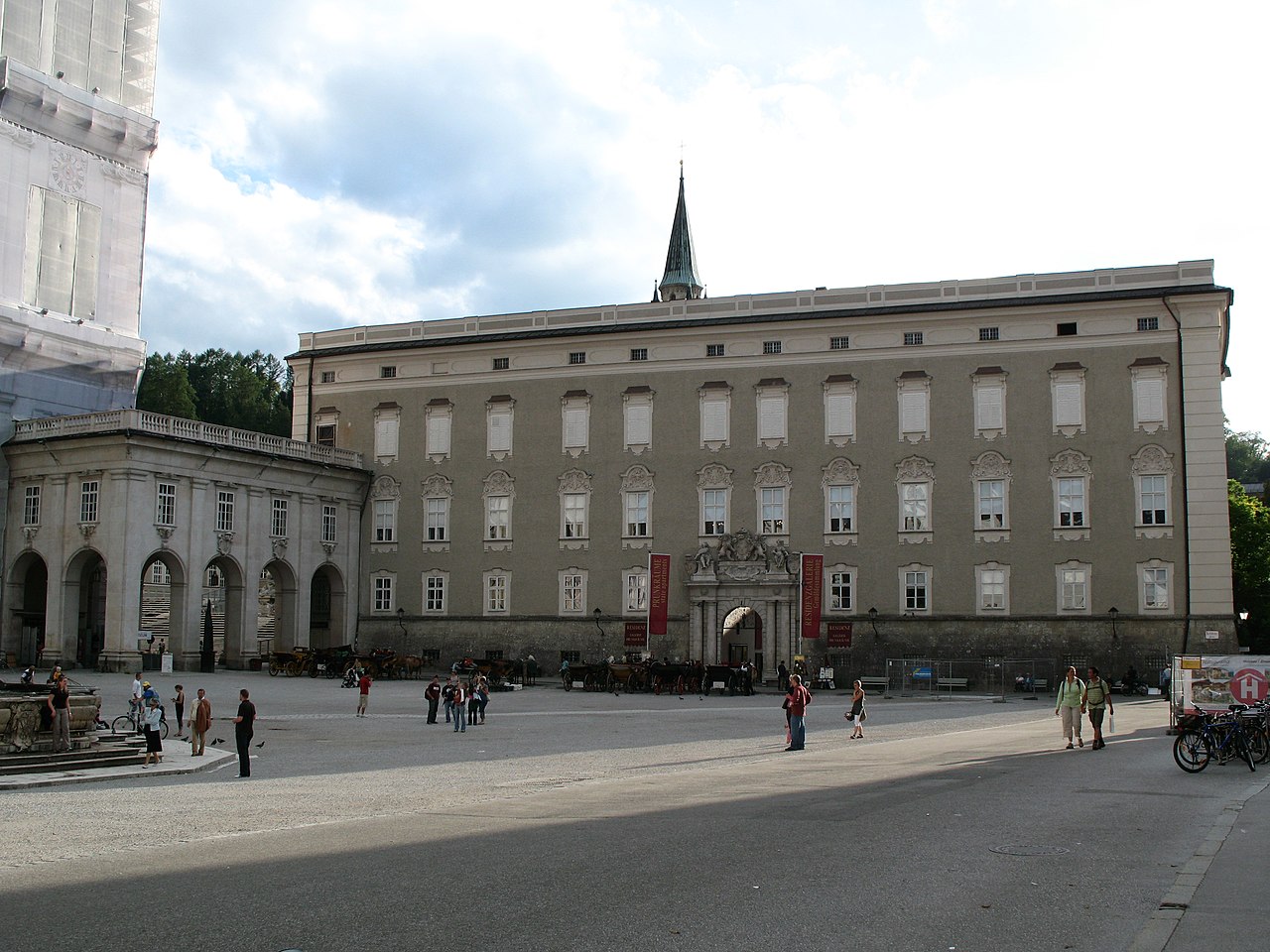by Susan Flantzer
© Unofficial Royalty 2021

Hedwig Eleonora of Holstein-Gottorp, Queen of Sweden; Credit – Wikipedia
Hedwig Eleonora of Holstein-Gottorp was the wife of Karl X Gustav, King of Sweden and served as regent during the minorities of her son Karl XI, King of Sweden and her grandson Karl XII, King of Sweden. She was born on October 23, 1636, at Gottorp Castle at Schleswig, in the Duchy of Schleswig, now in the German state of Schleswig-Holstein. Hedwig Eleonora was the sixth of the sixteen children and the fourth of the eight daughters of Friedrich III, Duke of Holstein-Gottorp and Marie Elisabeth of Saxony. Hedwig Eleonora’s paternal grandparents were Johann Adolf, Duke of Holstein-Gottorp and Augusta of Denmark, a daughter of Frederik II, King of Denmark. Her maternal grandparents were Johann Georg I, Elector of Saxony and Magdalene Sibylle of Prussia.
Hedwig Eleonora had fifteen siblings but only six survived childhood:
- Sofie Auguste of Holstein-Gottorp (1630 – 1680), married Johann VI, Prince of Anhalt-Zerbst, had fifteen children, great-grandparents of Catherine II (the Great), Empress of All Russia, born Sophie of Anhalt-Zerbst who married Peter III, Emperor of All Russia (see below)
- Magdalene Sibylle of Holstein-Gottorp (1631 – 1719), married Gustav Adolph, Duke of Mecklenburg-Güstrow, had eleven children including Louise of Mecklenburg-Güstrow who married Frederik IV, King of Denmark
- Johann Adolf of Holstein-Gottorp (1632 – 1633), died in infancy
- Marie Elisabeth of Holstein-Gottorp (1634 – 1665), married Ludwig VI, Landgrave of Hesse-Darmstadt, had eight children, died in childbirth
- Friedrich of Holstein-Gottorp (1635 – 1654), died in his teens
- Adolf August of Holstein-Gottorp (born and died 1637), died in infancy
- Johann Georg of Holstein-Gottorp (1638 – 1655), died in his teens
- Anna Dorothea of Holstein-Gottorp (1640 – 1713), unmarried
- Christian Albrecht, Duke of Holstein-Gottorp (1641 – 1695), Frederica Amalia of Denmark, daughter of Frederik III, King of Denmark, had four children, great-grandparents of Peter III, Emperor of All Russia, born Karl Peter Ulrich of Holstein-Gottorp who married the future Catherine II (the Great), Empress of All Russia (see above)
- Gustav Ulrich of Holstein-Gottorp (born and died 1642), died in infancy
- Christine Sabine of Holstein-Gottorp (1643 – 1644), died in infancy
- August Friedrich of Holstein-Gottorp, Prince-Bishop of Lübeck (link in German) (1646 – 1705), married Christine of Saxe-Weissenfels, no children
- Adolf of Holstein-Gottorp (born and died 1647), twin of Elisabeth Sofie, died in infancy
- Elisabeth Sofie of Holstein-Gottorp (born and died 1647), twin of Adolf, died in infancy
- Auguste Marie of Holstein-Gottorp (1649 – 1728), married Friedrich VII, Margrave of Baden-Durlach, had eleven children

Hedwig Eleonora’s husband Karl X Gustav, King of Sweden; Credit – Wikipedia
Hedwig Eleonora’s future husband Karl Gustav became King of Sweden in 1654 upon the abdication of his cousin Christina, Queen of Sweden. The 32-year-old new King of Sweden was unmarried as he has expected that he would marry his cousin Queen Christina and he needed to find a bride as soon as possible to provide an heir. The former Queen Christina of Sweden had met Hedwig Eleonora on her way to Rome, where she would spend the rest of her life. Concerned that Karl Gustav was unmarried, Christina suggested the match. However, Hedwig Eleonora was already engaged to Gustav Adolph, Duke of Mecklenburg-Güstrow, and so Christina recommended Hedwig Eleonora’s elder sister Magdalene Sibylle instead. After seeing portraits of both sisters, Karl Gustav chose Hedwig Eleonora because of her beauty, and her current fiancé was instead married to her sister Magdalena Sibylle.

The marriage of Karl Gustav and Hedwig Eleonora; Credit – Wikipedia
On October 24, 1654, the day after her eighteenth birthday, Hedwig Eleonora was married to Karl Gustav at the Tre Kronor Castle in Stockholm, Sweden. Three days later, Hedwig Eleonora was crowned Queen of Sweden at the Storkrykan (Great Church) in Stockholm.
Karl Gustav and Hedwig Eleonora had only one child, a son who succeeded his father:
- Karl XI, King of Sweden (1655 – 1697), married Ulrika Eleonora of Denmark, had seven children but only three survived childhood
Sweden was involved in the Second Northern War against Denmark-Norway and Poland-Lithuania and so Karl Gustav was often away on military campaigns. However, after the birth of her son Hedwig Eleonora often accompanied Karl Gustav on his military campaigns. She was very interested in the arts, particularly painting and architecture. Under her leadership, Drottningholm Palace, the current residence of the Swedish monarch, was built. Sadly, Hedwig Eleonora’s marriage lasted less than six years. Her husband Karl X Gustav, King of Sweden died at the age of 37 on February 13, 1660, from influenza and pneumonia, leaving his four-year-old son to succeed him as Karl XI, King of Sweden.
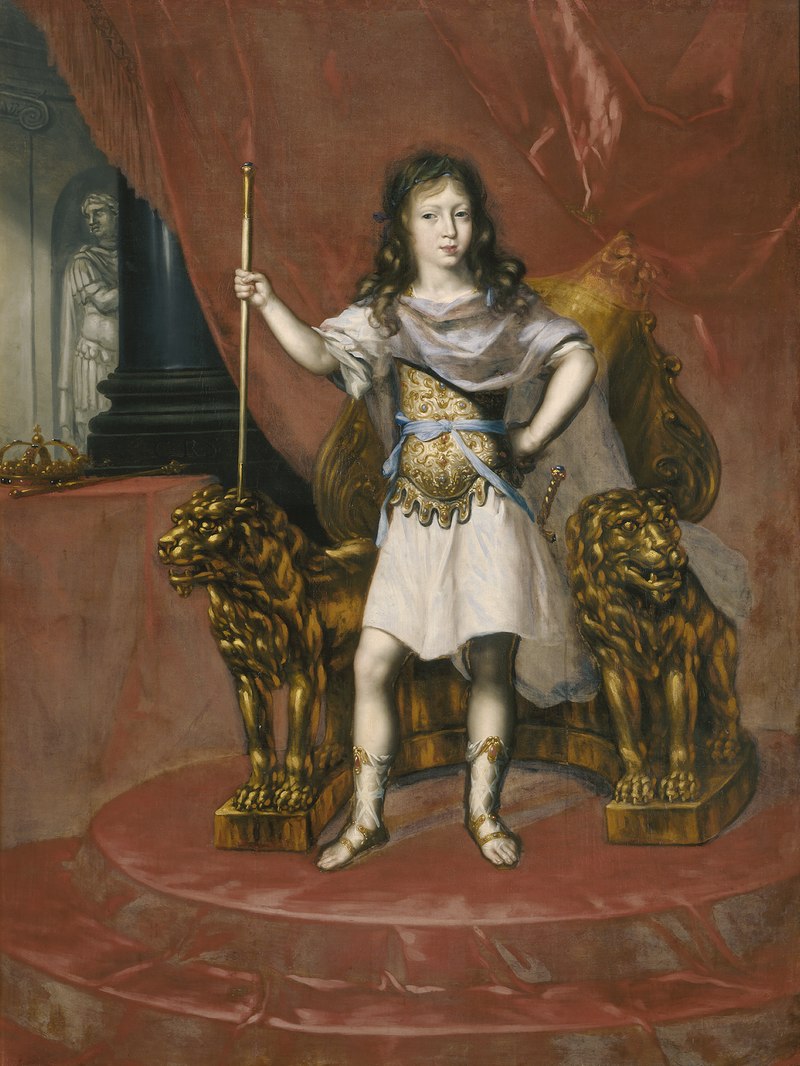
Hedwig Eleonora’s son Karl XI, King of Sweden at five years old; Credit – Wikipedia
After the death of her husband, Hedwig Eleonora was the dowager queen for 55 years. She remained visible in Swedish politics and society until her death. Karl X Gustav left specific instructions in his will for the regency of his son. Hedwig Eleonora was to be Regent of Sweden and her son’s guardian until he reached his majority. She would be the chairperson of the regency council and be responsible for the government along with five senior government officials. However, Hedwig Eleonora would have the advantage of having two votes on the regency council. Throughout her son’s regency, Hedwig Eleonora was present at all council meetings except when she was away to administrate her dower lands. She did not take an active part in politics but used her position as regent to protect her son’s interests and rights. Aware that she lacked the knowledge and support to pursue politics, Hedwig Eleonora did not want to give the regency council any excuse to prevent her from attending the meetings. She learned about the issues that were discussed, made statements, and suggested solutions, but did not actively pursue any of her own opinions.
Hedwig Eleonora was only 24-years-old when her husband died and in 1661, she was considered a possible wife for King Charles II of England. She refused the proposal with the official excuse that she wished to remain faithful to her deceased husband. In 1667, 18-year-old Count Carl Gyllenstierna (link in Swedish) became Hedwig Eleonora’s chamberlain. He became her favorite and his career quickly advanced. It is possible that he also became her lover.

Left to Right: Hedwig Eleonora; her son Karl XI; her grandson the future Karl XII; her daughter-in-law Ulrika Eleonora; her granddaughter Ulrika Eleonora; husband of her granddaughter Hedwig Sofia Fredrik IV, Duke of Holstein-Gottorp; her sister-in-law and the mother of Fredrik IV, Duke of Holstein-Gottorp Fredrika Amalia of Denmark, Dowager Duchess of Holstein-Gottorp; and her granddaughter Hedwig Sofia; Credit – Wikipedia
Even after her son married Ulrika Eleonora of Denmark, Hedwig Eleonora remained the first lady of the court. Foreign ambassadors always paid their respects to Hedwig Eleonora first, and then to Ulrika Eleonora. The hostility between Hedwig Eleonora’s homeland Holstein-Gottorp and Ulrika Eleonora’s homeland Denmark made the relationship between mother-in-law and daughter-in-law even more tense.

Hedwig Eleonor’s tomb at Riddarholmen Church; Credit – Wikipedia
Hedwig Eleonora survived her husband by fifty-five years and her son by eighteen years, dying on November 24, 1715, in Stockholm, Sweden at the age of 79. She was buried with her husband at Riddarholmen Church.
This article is the intellectual property of Unofficial Royalty and is NOT TO BE COPIED, EDITED, OR POSTED IN ANY FORM ON ANOTHER WEBSITE under any circumstances. It is permissible to use a link that directs to Unofficial Royalty.
Works Cited
- En.wikipedia.org. 2021. Frederick III, Duke of Holstein-Gottorp – Wikipedia. [online] Available at: <https://en.wikipedia.org/wiki/Frederick_III,_Duke_of_Holstein-Gottorp> [Accessed 29 August 2021].
- En.wikipedia.org. 2021. Hedwig Eleonora of Holstein-Gottorp – Wikipedia. [online] Available at: <https://en.wikipedia.org/wiki/Hedwig_Eleonora_of_Holstein-Gottorp> [Accessed 29 August 2021].
- Flantzer, Susan. 2021. Karl X Gustav, King of Sweden. [online] Unofficial Royalty. Available at: <https://www.unofficialroyalty.com/karl-x-gustav-king-of-sweden/> [Accessed 29 August 2021].
- Sv.wikipedia.org. 2021. Hedvig Eleonora av Holstein-Gottorp – Wikipedia. [online] Available at: <https://sv.wikipedia.org/wiki/Hedvig_Eleonora_av_Holstein-Gottorp> [Accessed 29 August 2021].








